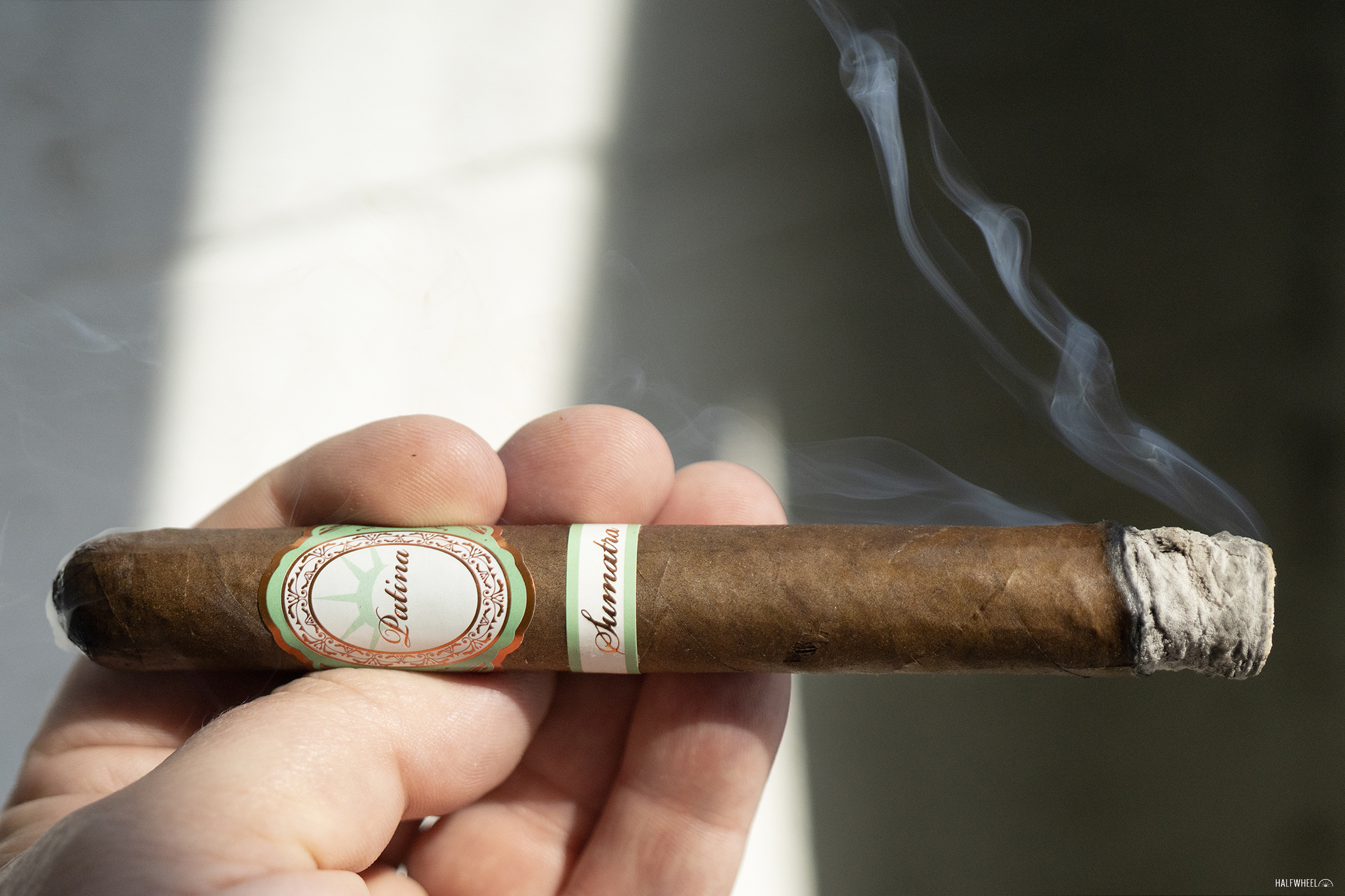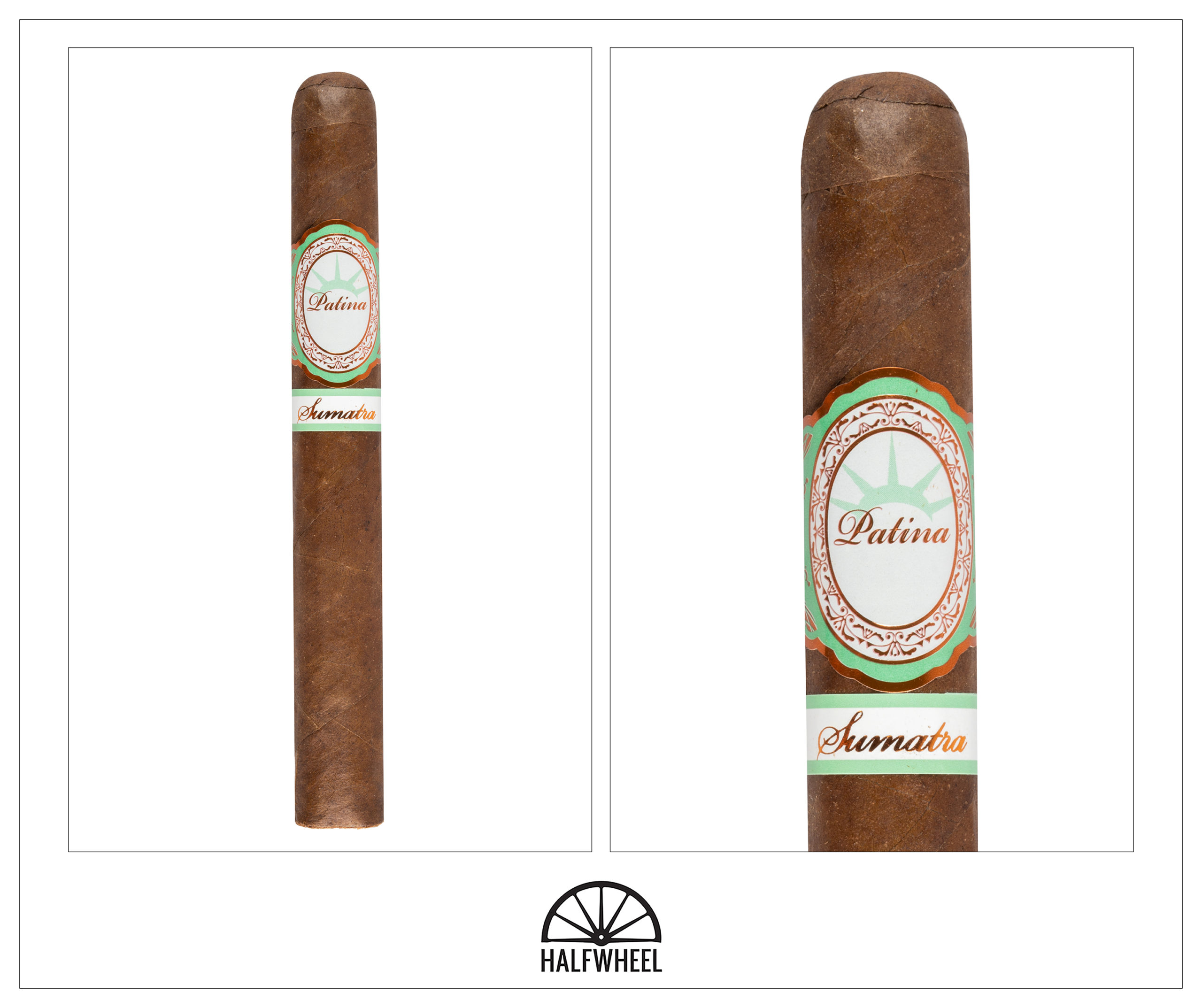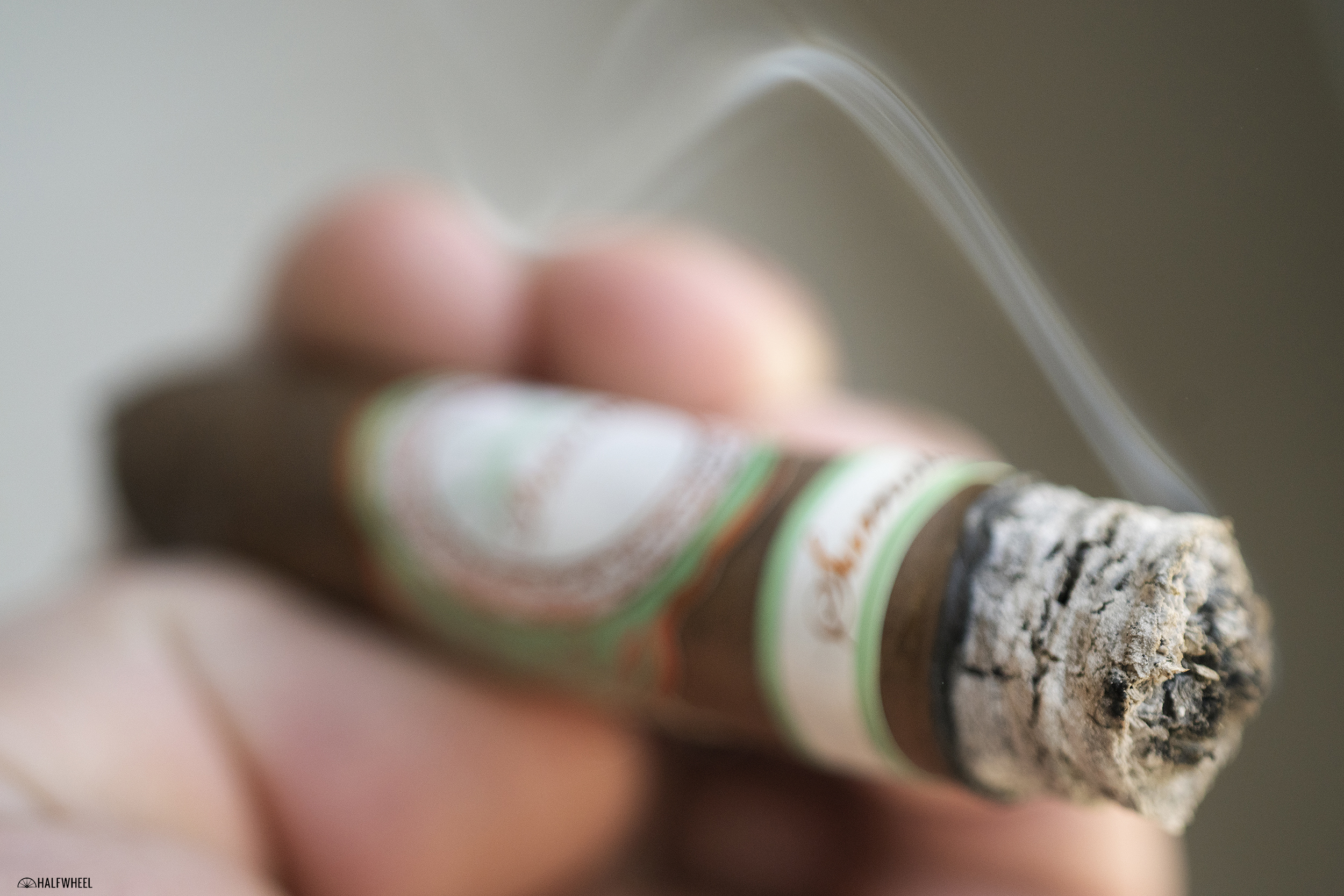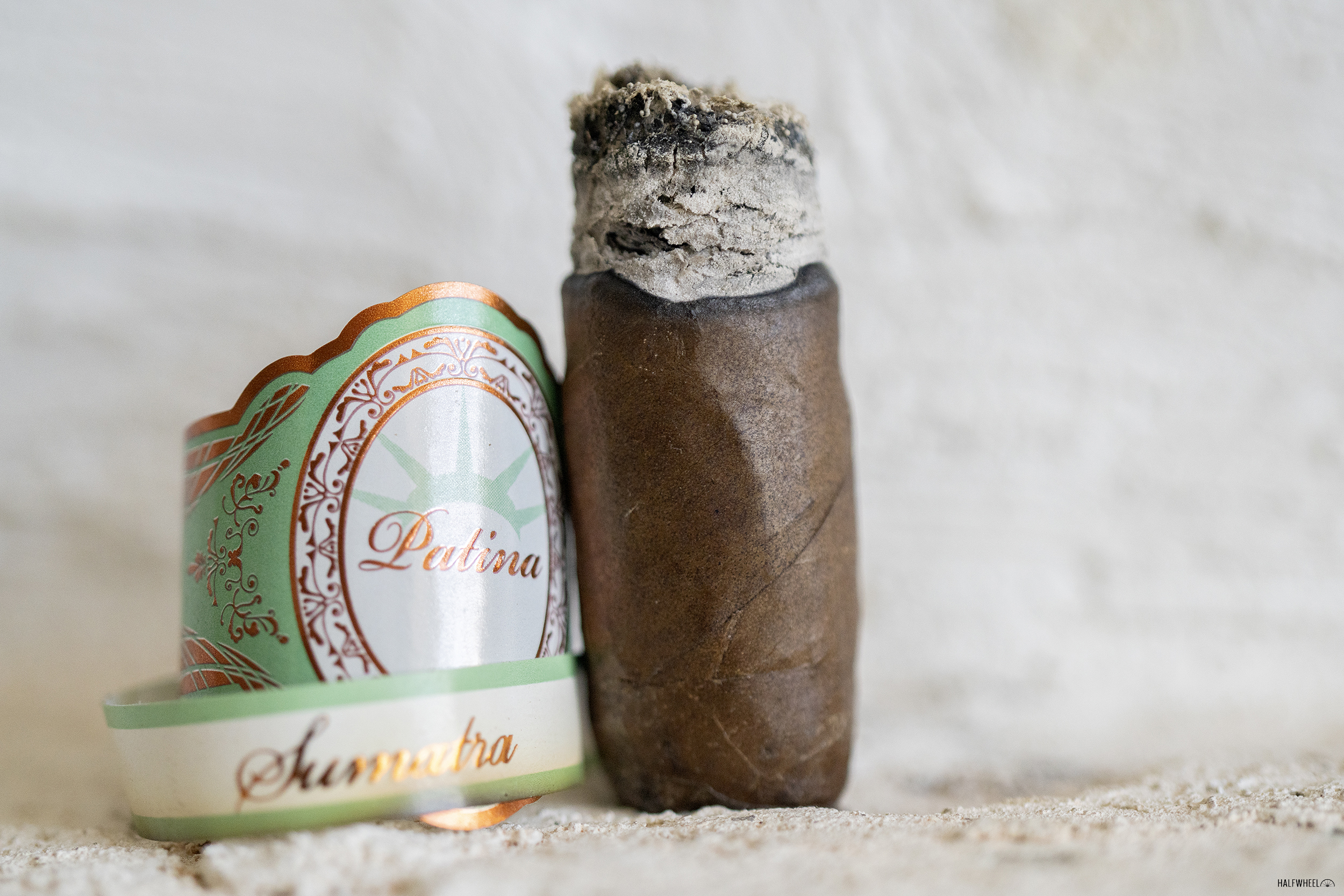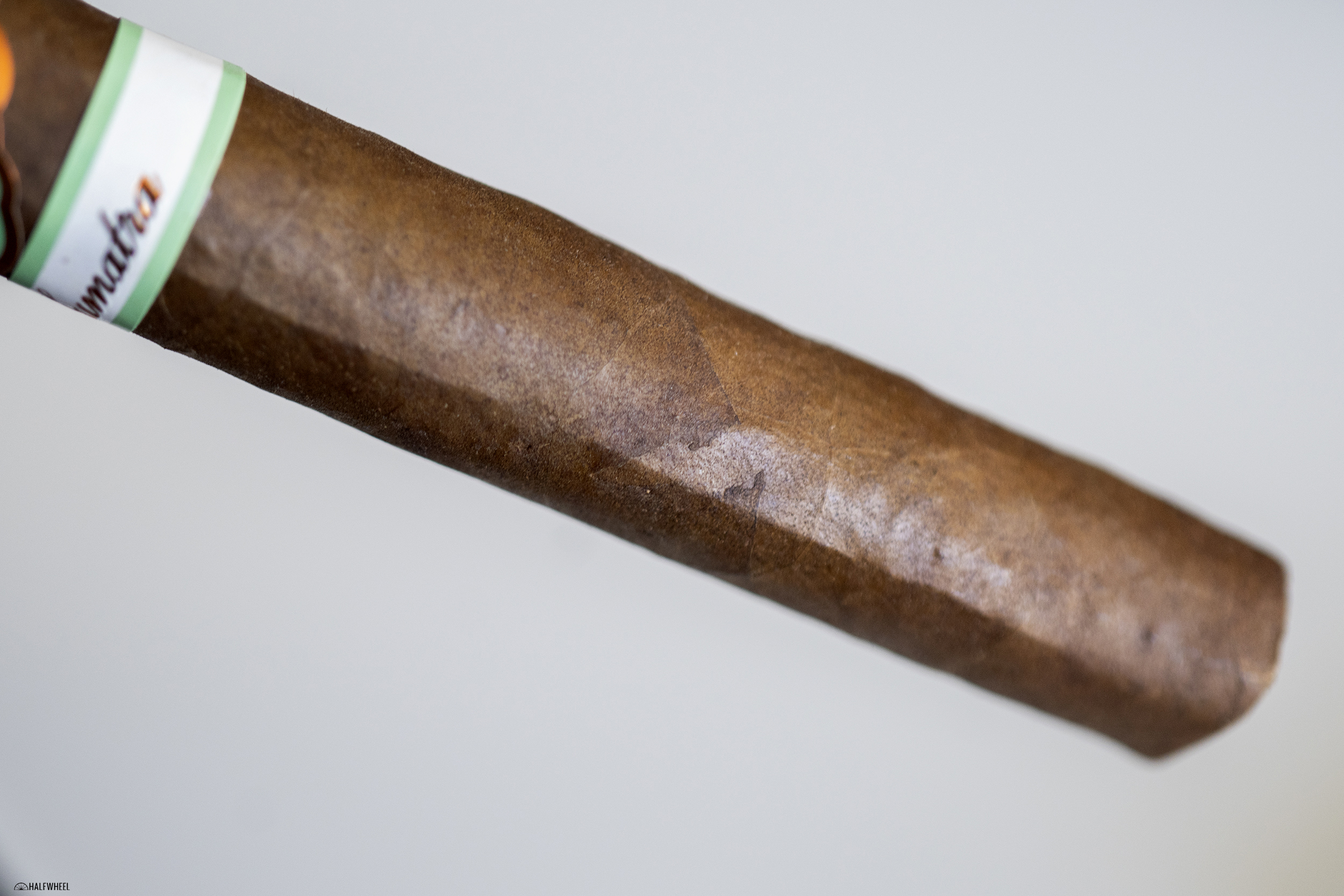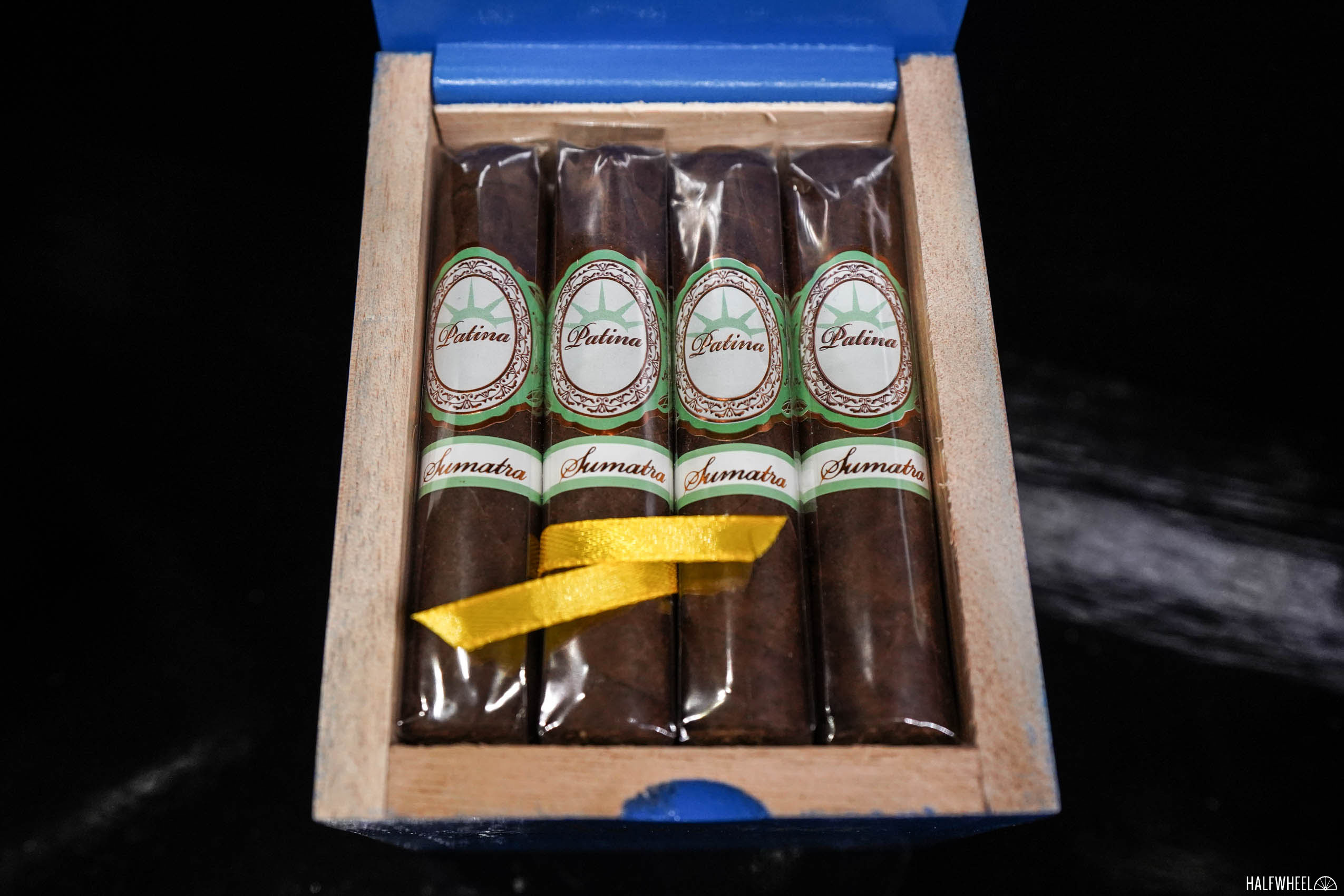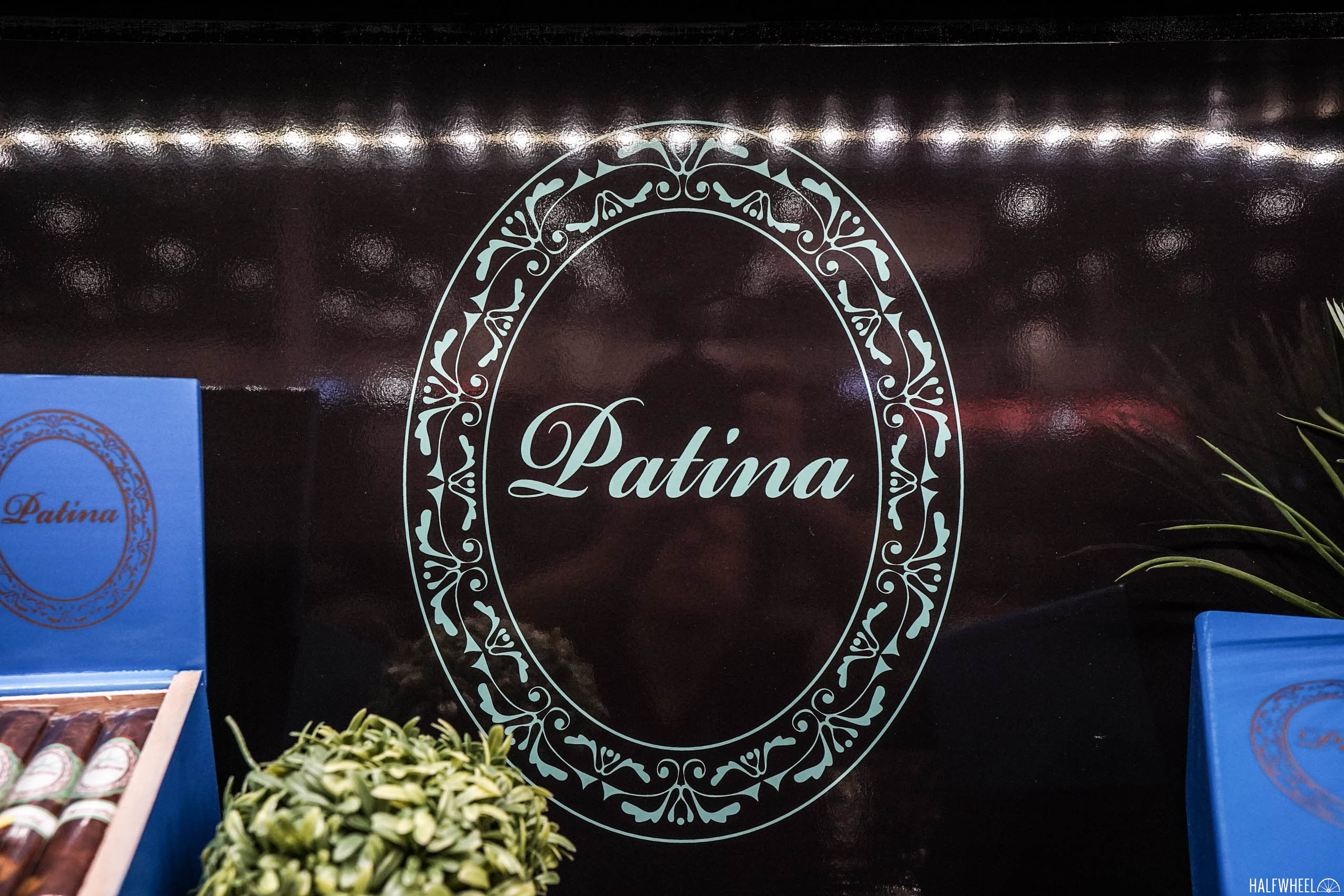During the 2022 PCA Convention & Trade Show, Patina Cigars followed up its first three core brands—Patina Connecticut, Patina Habano and Patina Maduro—with a forth core line named Patina Sumatra. As the name suggests, the Patina Sumatra is covered in an Ecuadorian Sumatra oscuro wrapper, while the internal blend is made up of a Connecticut broadleaf binder and filler tobaccos grown in the U.S. and Nicaragua.
“The Sumatra is a continuation of our strategy to create unique core line offerings that are available on a continual basis to our retailers and consumers,” said Mo Maali of Patina Cigars, in a press release. “It’s a very dynamic cigar and I can’t wait for people to enjoy it.”
There are currently a total of four violas available in the Patina Sumatra line:
- Patina Sumatra Precipitation (4 x 50) — $8.95 (Box of 16, $143.20)
- Patina Sumatra Rustic (5 x 52) — $10.95 (Box of 16, $175.20)
- Patina Sumatra Copper (6 x 46) — $10.95 (Box of 16, $175.20)
- Patina Sumatra Bronze (6 x 52) — $12.95 (Box of 16, $207.20)
The cigars are being produced by the Nicaragua American Cigars S.A. (NACSA) factory and started showing up on retailers’ shelves in early August.
- Cigar Reviewed: Patina Sumatra Copper
- Country of Origin: Nicaragua
- Factory: Nicaragua America Cigars S.A.
- Wrapper: Ecuador (Sumatra Oscuro)
- Binder: U.S.A. (Connecticut Broadleaf)
- Filler: Nicaragua & U.S.A.
- Length: 6 Inches
- Ring Gauge: 46
- Vitola: Corona Gorda
- MSRP: $10.95 (Box of 16, $175.20)
- Release Date: August 2022
- Number of Cigars Released: Regular Production
- Number of Cigars Smoked For Review: 3
A cinnamon brown wrapper that is relatively smooth to the touch covers the Patina Sumatra Copper, and while there is a quite a bit of oil noticeable, there are also a number of prominent veins. One cigar has what looks to be a box-press indention as well as a large soft spot just above the foot, and all three Patinas feature some nice give when they are squeezed. Sweet cedar and earth dominate the aromas emanating from the wrappers, followed by leather, generic nuts, dark chocolate, barnyard and a touch of mint. Aromas from the feet are quite a bit different, as raisin sweetness combines with cocoa nibs, espresso beans, leather tack, earth, cereal and cedar. Finally, the cold draws include notes of creamy cedar, cocoa nibs, vegetal, gritty earth, dry cereal, black pepper and more raisin sweetness.
After toasting the foot, gritty earth and black pepper start off the Patina Sumatra Copper, but it is not long before a distinct cedar note becomes the top flavor in the profile. Secondary notes of oatmeal, dark chocolate, roasted coffee beans, earth, generic nuts and sourdough bread flit in and out, while a slight but noticeable raisin sweetness combines with some black pepper on the retrohale. In addition, two of the three cigars feature a touch of mint on the finish—sadly, it is not strong enough to make any real impact on the profile as a whole—and all three also have a bit of spice on my tongue. Flavor ends the first third just under the medium mark, while both the body and strength are in lockstep with each other at mild plus. In terms of construction, smoke production is high and thick off of the foot and the draws are excellent after being cut with The Baller, while all three cigars are giving me no issues in terms of burn as of yet.
The main flavor in the profile of the Patina changes from cedar to leather during the second third, but quite a few of the other aspects remain about the same. That includes not only the secondary flavors—nuts, sourdough bread, earth, cedar and cocoa nibs—but also the retrohale, where both the black pepper and raisin sweetness are still present. Unfortunately, the fleeting mint note on the finish from the first third has disappeared and does not return, but all three cigars continue to exhibit a small amount of spice on my tongue that seems content to remain right where it is. Flavor has bumped up slightly to a solid medium, while the body remains at mild plus and the strength increases to a point just under medium. The construction remains pretty much unchanged as well, as all three cigars feature great draws, straight burn lines that need no attention and copious amounts of smoke emanating from their respective feet.
Unfortunately, the final third of the Copper is a virtual carbon copy of the second third, at least when it comes to the profile: leather continues to be the main flavor, easily outpacing secondary notes of cedar, earth, sourdough bread, peanuts, cocoa nibs and bitter espresso. In addition, there is still some slight spice on my tongue as well as both black pepper and raisin sweetness on the retrohale, all in about the same amounts when compared to the previous third. Flavor does not budge from solid medium, but the body and strength have slight increases landing at just under medium and solid medium respectively. Finally, the amount of smoke production and the draws continue along their excellent paths until I put the nubs down with less than an inch remaining, but all three cigars need one correction with my lighter during the final third.
Final Notes
- According to the company’s website, the definition of Patina is: “an oxidation process that, over time, produces a green film over bronze or copper (i.e. a statue or building).”
- For what it is worth, the size of a classic Cuban corona gorda is 5 5/8 x 46, but quite a few non-Cuban companies tend to release their versions of the vitola as a 6 x 46 cigar.
- I am not sure that these are supposed to be box-pressed—there is no indication of that on any of the press materials or social media posts I read—but one cigar had a very obvious box-press line as well as a foot that was definitely shaped more like a rectangle than a circle.
- Earlier this year, Patina announced a 2 percent price increase on its Connecticut and Habano lines, which was the first increase on the lines in the company’s five-year history.
- In July, Patina announced a new four-count sampler pack that includes a 5 x 52 Rustic vitola from each of the company’s four core lines: Patina Connecticut, Patina Habano, Patina Maduro and Patina Sumatra. Each humidified, resealable sampler bag is priced at $32 and they started shipping to retailers in August.
- Construction was excellent until the end, when the burn line on all three cigars became problematic enough to need corrections at almost exactly the same point, specifically about halfway through the final third.
- The cigars smoked for this review were purchased by halfwheel.
- Final smoking time averaged one hour and 49 minutes for all three cigars.
- If you would like to purchase any of the Patina Sumatra Copper Corona Gorda, site sponsor Atlantic Cigar Co. has them for sale on its website here.
On paper, the blend of the Patina Sumatra Copper is more than a little interesting: a Sumatra wrapper, a Connecticut broadleaf binder and a filler that includes tobaccos from both the U.S. and Nicaragua. Unfortunately, the actual profile is anything but engaging, with very few noticeable transitions and fairly standard main flavors of cedar and leather. Sure, there is some nice black pepper and raisin sweetness on the retrohale as well as a faint and all-too-fleeting mint note on the finish in the first third, but none of those come close to being strong enough to change how linear the cigar is. I would be interested in trying this blend in a different vitola, but as it stands now, if you are looking to try a Patina for the first time, I would start with the Maduro line.

